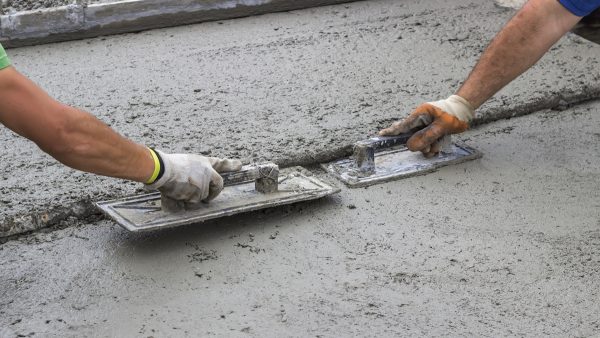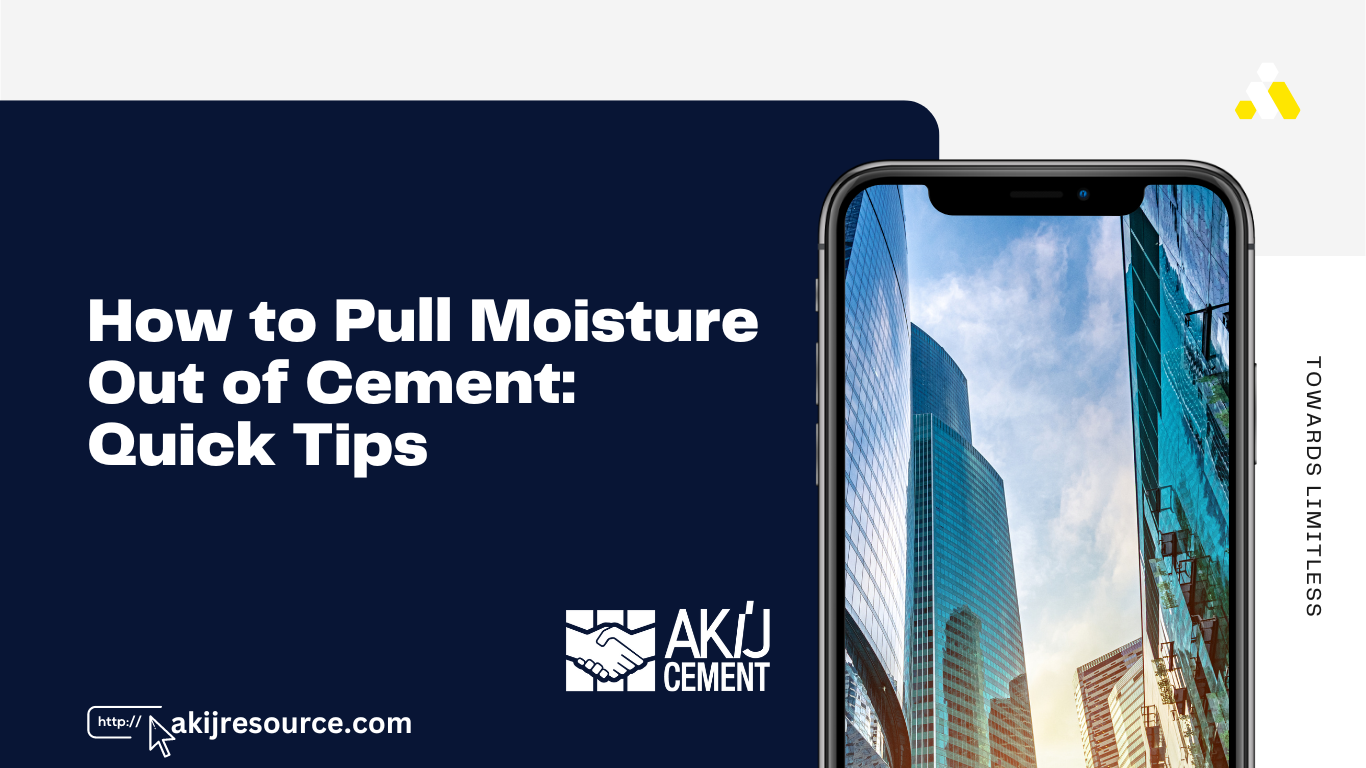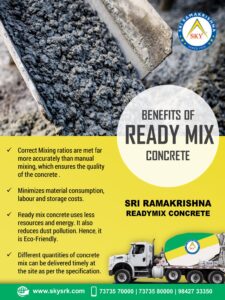To pull moisture out of cement, use dehumidifiers and proper ventilation. Ensure the area is dry and well-ventilated.
Moisture in cement can cause significant issues, including weakening the structure and promoting mold growth. Removing excess moisture is crucial for maintaining the integrity of the cement. Use dehumidifiers to lower humidity levels and improve air circulation. Proper ventilation helps in expelling moist air and bringing in dry air.
By maintaining these conditions, you can ensure the cement dries properly and remains strong. Regularly check the moisture levels to prevent future problems. This approach not only protects the cement but also extends its lifespan, ensuring a durable and safe structure.
Introduction To Moisture In Cement
Moisture in cement can cause many problems. It can weaken the structure and make it unsafe. It is vital to understand how to manage and remove this moisture.
Cement is a key material in construction. It needs to be dry and strong. Excess moisture can make cement crack and break. This can lead to costly repairs.
The Impact Of Excess Moisture
Excess moisture can cause serious damage to cement structures. It can lead to mold growth and weakening of the cement. This makes the structure unsafe.
Mold growth is a health hazard. It can cause allergies and respiratory issues. Weak cement can lead to cracks and breaks. This needs to be fixed quickly.
| Impact | Description |
|---|---|
| Mold Growth | Causes health issues like allergies |
| Weak Cement | Leads to cracks and breaks |
| Costly Repairs | Increases maintenance expenses |
Identifying Moisture Presence
It is important to identify moisture in cement early. Signs of moisture include damp spots and white powder on the surface. This white powder is called efflorescence.
Use a moisture meter to check the cement. This tool is easy to use. It will show if there is moisture inside the cement.
- Look for damp spots
- Check for white powder (efflorescence)
- Use a moisture meter

Credit: www.servicemasterbyzaba.com
Pre-pouring Tips For Moisture Control
Controlling moisture in cement is crucial. Proper moisture control ensures durable and strong concrete. Follow these pre-pouring tips for optimal results.
Selecting The Right Materials
Choosing the right materials is essential. Use high-quality cement with low moisture content. Always check the packaging for moisture levels. Select aggregates that are clean and dry. Avoid using wet or damp sand. Wet sand can increase moisture in the mix. Use additives that help reduce moisture absorption.
| Material | Moisture Control Tips |
|---|---|
| Cement | Check moisture content on the packaging |
| Aggregates | Use clean and dry aggregates |
| Sand | Avoid using wet or damp sand |
| Additives | Select those that reduce moisture absorption |
Optimal Environmental Conditions
Environmental conditions play a key role. Pour cement during dry weather. Avoid rainy or humid days. Ensure the work area is well-ventilated. Good ventilation helps the cement dry faster. Keep the temperature moderate. Extreme heat or cold can affect moisture levels.
- Choose dry days for pouring cement
- Ensure good ventilation at the site
- Maintain moderate temperatures
- Avoid extreme weather conditions
Proper Mixing Techniques
Understanding the proper mixing techniques for cement is crucial for achieving a durable and strong final product. The right mix ensures that moisture is adequately controlled and the cement sets correctly. This section will guide you through the essential steps for proper cement mixing.
Water-to-cement Ratio
The water-to-cement ratio is a key factor in pulling moisture out of cement. Too much water can weaken the mixture, while too little can make it unworkable.
Aim for a water-to-cement ratio of about 0.4 to 0.6. This means for every pound of cement, use 0.4 to 0.6 pounds of water.
Here is a simple table to illustrate the correct ratios:
| Cement (lbs) | Water (lbs) |
|---|---|
| 10 | 4 – 6 |
| 20 | 8 – 12 |
Mixing Tools And Methods
The tools and methods you use for mixing cement can affect moisture control.
Here are some essential tools you will need:
- Concrete mixer or a wheelbarrow
- Shovel or hoe
- Measuring bucket
Follow these steps for proper mixing:
- Measure the required amount of cement and water.
- Add water to the mixer or wheelbarrow.
- Gradually add cement while mixing.
- Mix until you achieve a uniform consistency.
Mix thoroughly to ensure that the cement is well-hydrated. This helps in controlling moisture and achieving a strong final product.
Effective Waterproofing Strategies
Effective waterproofing strategies are essential for maintaining the durability of cement structures. Moisture can cause significant damage over time. This section will explore two primary methods: surface sealants and integral solutions.
Surface Sealants
Surface sealants are a popular method for waterproofing cement. They form a protective layer on the surface of the cement.
There are various types of surface sealants available. Some of the most common include:
- Penetrating sealants – These sealants seep into the pores of the cement, providing deep protection.
- Topical sealants – These create a layer on the surface and are easy to apply.
- Film-forming sealants – These form a thick coating, offering robust protection against moisture.
Applying a surface sealant is straightforward. Here are the basic steps:
- Clean the cement surface thoroughly. Remove dirt and debris.
- Apply the sealant using a brush, roller, or sprayer.
- Allow the sealant to dry completely before exposing the area to water.
Integral Solutions
Integral solutions involve adding waterproofing materials directly into the cement mix. This method provides long-lasting protection.
There are different types of integral solutions:
| Type | Benefits |
|---|---|
| Admixtures | Added to the cement mix for overall moisture resistance. |
| Waterproofing agents | Enhance the cement’s natural resistance to water. |
| Crystalline technology | Forms crystals that block water pathways. |
Using integral solutions requires mixing the waterproofing agents with cement during preparation. This ensures the entire structure is protected.
Here are some key steps to follow:
- Select the appropriate agent for your project needs.
- Mix the agent thoroughly with the cement components.
- Ensure uniform distribution to achieve consistent protection.
Both surface sealants and integral solutions are effective. They help in keeping your cement structures dry and durable.
Utilizing Dehumidifiers
Pulling moisture out of cement can be challenging. Dehumidifiers are an effective tool to achieve this task. They help to reduce the moisture level in the air. This makes the cement dry faster and more evenly.
Choosing The Right Dehumidifier
Selecting the proper dehumidifier is crucial. Not all dehumidifiers are the same. Consider the size of the area where the cement is located. A small room needs a small dehumidifier. A large area needs a bigger one.
Check the capacity of the dehumidifier. This tells you how much moisture it can remove in a day. For large areas or very wet cement, choose a higher capacity unit. Look for energy-efficient models to save on power bills.
Noise level is another factor. Some dehumidifiers can be noisy. If you plan to use it in a quiet area, pick a model known for its quiet operation.
Placement And Operation
Where you place the dehumidifier is important. Place it in the center of the room for the best results. Ensure there is enough space around it for air to circulate. Avoid placing it against walls or furniture.
Turn on the dehumidifier and set it to the desired humidity level. For drying cement, a lower humidity setting is often better. Check the water collection tank regularly. Empty it when full to keep the dehumidifier working efficiently.
Maintain the dehumidifier by cleaning the filter. A clean filter allows for better airflow and more effective moisture removal. Regular maintenance keeps the unit working well and extends its life.
| Factor | Recommendation |
|---|---|
| Area Size | Small room: small dehumidifier; Large area: large dehumidifier |
| Capacity | High capacity for wet cement |
| Energy Efficiency | Choose energy-efficient models |
| Noise Level | Pick a quiet model for quiet areas |
Heating And Ventilation Solutions
Removing moisture from cement is crucial. It ensures the strength and durability of the material. Heating and ventilation solutions are effective ways to achieve this. These methods speed up the drying process. They also prevent mold growth and structural damage.
Heat Guns And Blowers
Heat guns and blowers are powerful tools. They help in drying cement quickly. These devices direct hot air onto the wet surface. The heat evaporates the moisture. This method is fast and efficient.
Using heat guns and blowers is simple. First, ensure the area is clean. Then, set the device to the right temperature. Move the tool back and forth over the wet cement. This ensures even drying. Always keep the device moving. This prevents overheating and damage to the cement.
Ventilation For Moisture Evaporation
Proper ventilation is key to drying cement. It allows moist air to escape. Fresh air then replaces it. This speeds up the drying process. Ventilation also reduces the risk of mold and mildew.
There are many ways to improve ventilation. Open windows and doors if possible. Use fans to circulate air. Placing fans at strategic points helps. It directs fresh air to wet areas.
Another method is using dehumidifiers. They remove moisture from the air. This makes the environment less humid. Less humidity means faster drying for the cement.
Here is a table of tools and their benefits:
| Tool | Benefit |
|---|---|
| Heat Guns | Quick moisture evaporation |
| Blowers | Even drying |
| Fans | Improves air circulation |
| Dehumidifiers | Reduces air moisture |
Key Points to Remember:
- Use heat guns and blowers for fast drying.
- Ensure proper ventilation.
- Use fans and dehumidifiers to aid drying.
Chemical Absorbents And Desiccants
Chemical Absorbents and Desiccants are essential tools for pulling moisture out of cement. These materials are designed to absorb and retain water, helping to keep cement dry and strong. By using the right chemical absorbents and desiccants, you can improve the longevity and durability of your cement structures.
Types Of Desiccants
Desiccants come in various forms, each with unique properties. Here are some common types:
- Silica Gel: This is a popular choice. It has a high absorption capacity.
- Calcium Chloride: Known for its strong moisture absorption. It is often used in industrial settings.
- Activated Alumina: Effective in high-humidity environments. It is often used in air dryers.
- Clay Desiccants: Natural and cost-effective. They are used in packaging and storage.
Application Techniques
Proper application is key to ensuring effective moisture control. Follow these steps:
- Identify the Area: Determine the areas where moisture is a problem.
- Choose the Right Desiccant: Select a desiccant based on the environment and moisture levels.
- Place the Desiccant: Position the desiccant close to the cement. Ensure it is in a location where it can absorb the most moisture.
- Monitor and Replace: Check the desiccant regularly. Replace it when it becomes saturated.
| Desiccant Type | Best Use |
|---|---|
| Silica Gel | General use, high absorption |
| Calcium Chloride | Industrial settings, strong absorption |
| Activated Alumina | High-humidity environments |
| Clay Desiccants | Packaging and storage, cost-effective |
Using chemical absorbents and desiccants effectively can make a significant difference in the quality of your cement. By understanding the different types and proper application techniques, you can maintain dry and durable cement structures.

Credit: jkirestoration.com
Curing And Drying Best Practices
Proper curing and drying of cement are critical steps to ensure strength and durability. Effective curing helps in retaining moisture, which is essential for the chemical reactions that give cement its strength. Drying, on the other hand, involves removing excess moisture to prepare the cement for subsequent processes. Here are some best practices to follow for optimal results.
Curing Compounds
Using curing compounds is one of the most effective methods to retain moisture. Curing compounds form a protective layer over the cement, preventing water from evaporating too quickly. They are available in various forms:
- Liquid Membranes: Applied using a spray, these form a film over the surface.
- Sheeting: Plastic sheets are laid over the cement to trap moisture.
- Curing Blankets: These are thermal blankets that help in maintaining the right temperature and moisture levels.
Timing And Monitoring
Timing is crucial for both curing and drying processes. Start curing as soon as the cement is set but still moist. This usually happens within a few hours of pouring. Monitor the moisture levels regularly to ensure they remain within the optimal range. Use tools like hygrometers or moisture meters for accurate readings.
Here is a simple table to summarize the key steps:
| Step | Description |
|---|---|
| Start Curing | Begin within a few hours of pouring |
| Apply Curing Compound | Use liquid membranes, sheeting, or curing blankets |
| Monitor Moisture | Use hygrometers or moisture meters |
Drying should follow once the curing process is complete. Ensure the environment is well-ventilated to facilitate the removal of moisture. Drying typically takes a few days to a week, depending on the weather conditions.
Troubleshooting Common Issues
Pulling moisture out of cement can be tricky. Sometimes, issues arise that need quick solutions. Here, we will discuss how to handle high humidity and unexpected water sources.
Dealing With High Humidity
High humidity makes it hard for cement to dry. Using a dehumidifier can help. Place it near the cement. This machine pulls moisture from the air. Keep windows closed to stop more humidity from entering. Use fans to circulate the air. This speeds up the drying process.
Try these methods:
- Dehumidifier
- Fans
- Closed windows
These tools help in reducing the moisture around the cement. Check humidity levels with a hygrometer. Aim for levels below 50%.
Addressing Unexpected Water Sources
Sometimes, water comes from unknown places. Inspect the area for leaks. Check pipes and nearby water sources. Fix any leaks you find. Cover the cement with a waterproof tarp. This stops extra water from soaking in.
Steps to take:
- Inspect for leaks
- Fix leaks
- Cover cement
Use a sump pump if water collects. This tool removes water quickly. Seal cracks in the cement. This prevents more moisture from entering.
Monitor the area regularly. Make sure no new water sources appear. Keeping the area dry is key to pulling moisture out of cement.
Conclusion And Maintenance Tips
Pulling moisture out of cement is crucial for its durability. Proper maintenance ensures the cement stays strong and lasts longer. Below are some essential tips to help you manage moisture and maintain your cement effectively.
Long-term Moisture Management
Long-term moisture management involves several steps. First, ensure proper drainage around the cement. Water should not pool around the cement surface.
Next, use a good sealant. Sealing the cement helps prevent moisture penetration. Reapply the sealant every few years.
Maintaining a clean surface is also important. Dirt and debris can trap moisture. Sweep the cement regularly to keep it clean.
| Moisture Management Tips | Frequency |
|---|---|
| Ensure Proper Drainage | Always |
| Apply Sealant | Every 2-3 years |
| Keep Surface Clean | Weekly |
Regular Inspection And Care
Regular inspection is key to maintaining cement. Check for cracks or signs of moisture damage. Inspect the cement every few months.
If you find any cracks, repair them quickly. Use a good quality cement patch. This prevents moisture from seeping in.
Look for any signs of mold or mildew. Mold can grow in damp conditions. Clean it immediately to prevent spreading.
- Inspect for cracks and damage
- Repair cracks immediately
- Check for mold and mildew
- Clean mold promptly
Frequently Asked Questions
What Is The Fastest Way To Get Moisture Out Of Concrete?
Use industrial fans and dehumidifiers to speed up moisture removal from concrete. Ensure proper ventilation for best results.
How Long Does It Take To Get Moisture Out Of Concrete?
It typically takes 28 days for concrete to dry completely. Humidity and temperature can affect drying time.
How To Dry Out Cement?
To dry out cement, ensure proper ventilation and use fans. Apply dehumidifiers to reduce moisture. Avoid water contact.
Will A Dehumidifier Pull Moisture Out Of Concrete?
Yes, a dehumidifier can help reduce moisture in concrete. It removes excess humidity from the surrounding air, aiding the drying process.
Conclusion
Drying cement properly ensures durability and strength. Follow the steps outlined to effectively pull moisture out of cement. This will prevent cracks and enhance longevity. Proper moisture control is key for successful construction projects. Remember to monitor the drying process closely for the best results.
Your cement will thank you with lasting performance.






